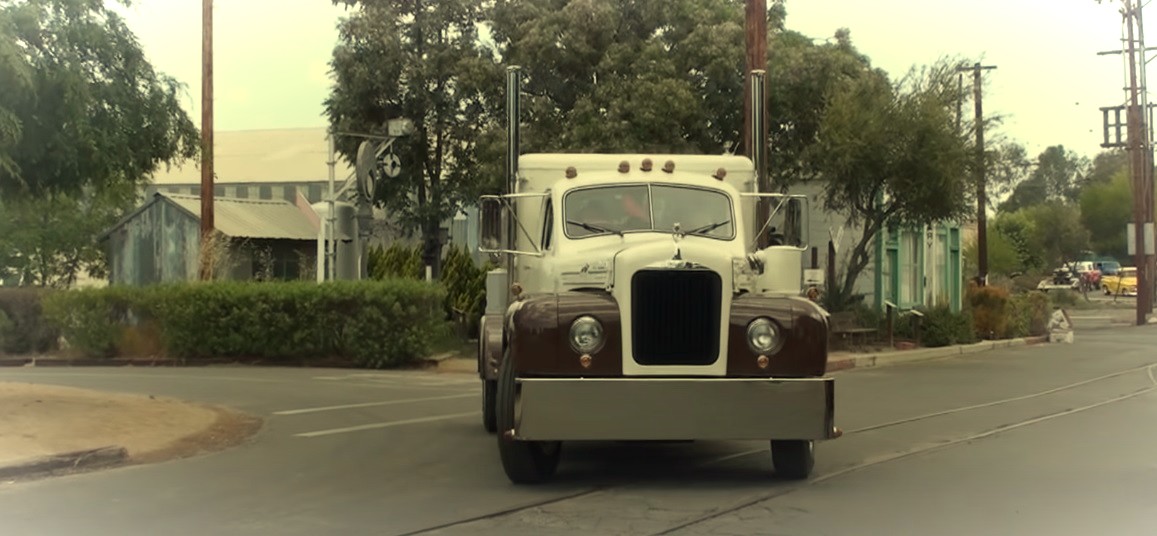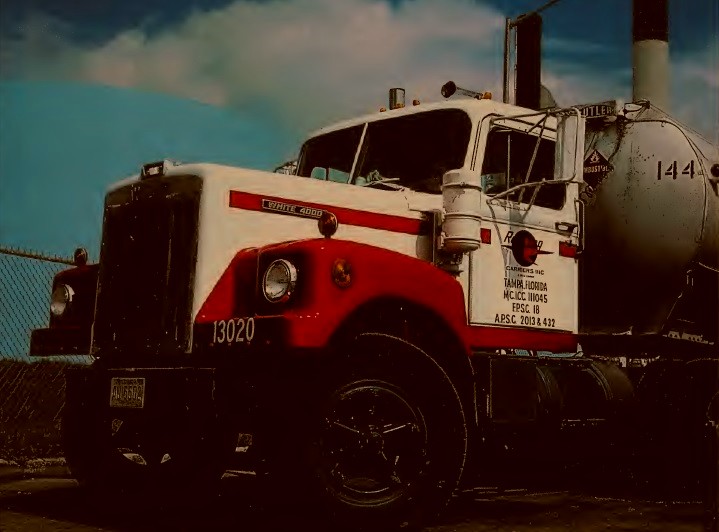Truck History
It is generally acknowledged that the era of mechanically propelled transport started in 1769 when Nicholas Cugnot built a three-wheeled vehicle with steam propulsion capable of 4 mph. It ran in the streets of Paris and was designed to carry four passengers. A Welsh inventor, Oliver Evans, who had emigrated to America and lived in Maryland produced a elementary steam wagon in 1772.
Foden, based in Cheshire, England, successfully produced steam trucks until 1929 when it made the decision to concentrate entirely on diesel-engined truck production. This steam wagon, ‘Queen Mary’, was built in 1908 and was supplied to an English brewery company.
He examined the possibilities of applying steam power to propel a vehicle and in 1787 was granted the right to manufacture a steam wagon in the United States. His wagon never made it as far as production but he did build a steam-powered dredging machine that he rigged to drive from its place of manufacture to the River Schuylkill before being driven to Delaware.
In 1788, a vehicle built along similar lines - the Fourness - was built in Great Britain. By 1831 the idea was proven and men such as Sir Charles Dance and Walter Hancock operated a number of steam coaches on regular routes. The latter’s machines were capable of up to 20 mph. The railway age boomed but the mechanization of road transport was a natural progression and experimentation towards practical methods of implementation continued in both.
Europe and the United States.
In the closing years of the 19th century, internal combustion-engine- powered vehicles began to make an appearance and names like Benz, Daimler, De Dion, Panhard and Peugeot became prominent in Europe, while in Britain, Albion, Dennis, Humber, Napier, Sunbeam and Wolseley became widely known.
The first British commercial vehicle that was both viable and practical was made by Thornycroft in 1896. That same year, the crippling ‘Red Flag Act’ was repealed which had previously forced the operators of vehicles powered by the internal combustion engine to employ a man to walk before them with a warning flag. Tthe repeal of this odd legislation paved the way for the development of road transport in the United Kingdom.
Bean produced trucks of a conventional design alongside those of many other manufacturers as road haulage in the U.K. established itself.
A year earlier, Richard F. Stewart of Pocantico Hills, New York, produced a truck with a 2-hp Daimler engine and internal gear drive and two years later began to produce trucks for sale.
These were steam-powered with a marine- type steam boiler and vertical engine.
Within a few years Thorneycroft had produced the world’s first articulated truck. The British Army was quick to realize its potential and by 1899 had purchased some for use in the Boer War in South Africa, Leyland vehicles appeared in 1896 under the auspices of the Lancashire Steam Motor Company whose first vehicle was a van with an oil-fired boiler and two-cylinder compound engine. Manufacturers of steam traction engines began to build steam lorries and one of them, Foden, was to become the world’s largest maker of steam vehicles.
In 1897 the Daimler Motor Company of Coventry, England, offered a petrol-engined commercial vehicle. It was designed by Panhard and powered by a Daimler internal combustion engine. From this they went on to build other similar machines.
Across the Atlantic the first Mack truck was rolling out of the Brooklyn works. The company had been established by five brothers of German parentage who had formerly operated a Brooklyn smithy. The smithy was gradually turned over to the production of trucks and their first is reputed to have travelled a million miles.
In 1904 the brothers built a charabanc which they named the Manhattan and by 1905 had been sufficiently successful to be able to transfer their operation to Allentown, Pennsylvania where they introduced the Model AC. This was the truck that earned 'them the ‘Bulldog’ Mack nickname. It was a four- cylinder petrol-engined truck based on a pressed steel chassis frame. Transmission was by means of a three- speed gearbox through a jackshaft which had chain drive to the rear wheels which were fitted with solid tyres.
Mack AC
The truck featured a cab, which was unusual at the time, and was of a bonneted type. The AC was supplied in significant numbers to the British Army in France where it earned the Bulldog tag. Another landmark from Mack was the predecessor of the ‘cab over engine’ design when it was realized that if the driver sat over the engine it was possible to incorporate a longer load bed in a chassis of the same length. The fledgeling Mack company also developed the Junior model, a 2- ton truck intended for lighter duties which in many ways was the forerunner of the delivery van.
In the early 1900s came the realization that both the public as well as potential customers needed educating in the advantages of commercial truck manufacture and a series of trials was organized known as The Liverpool Trials. They were run in 1898, 1899 and 1901 for steam- powered vehicles. The Automobile Club of America organized similar events based on the success of certain French trials of 1897. The American trials were two day events and featured classes for steam, petrol and electric powered machines. The outcome was that the internal combustion-engined truck carried the honours. A more practical test was organized for 1904 when for five days the trials simulated actual working conditions with employees of the American and Weskit Express Companies taking part. Trucks were a relatively common sight by 1904, especially in the 5 to 3 ton capacity. Larger trucks tended to be steam-powered.
By 1910, numerous ideas for trucks and their design had been tried and some were rejected, such as rear engined belt-driven machines. The popular configuration was proving to be front-engined with either forward or normal control depending on the position of the driver’s seat and steering wheel. Proving the trucks was a recurrent theme: a Swiss designed Saurer, built in Plainfield, New Jersey, undertook a journey from Denver, Colorado to New York. Other manufacturers followed these enterprising examples. In 1912, trucks made by FWD, White and Autocar travelled 1500 miles through the southern states in 45 days averaging 33 miles per day. This was far faster than the pack mules previously employed despite dreadful road surfaces.
Tyres were a component that required attention: the pneumatic tyre had been introduced by the Michelin brothers in 1895 but a suitable truck tyre still remained to be developed. By 1919 most trucks in the United States of up to two tons were so equipped.
Further progress was made in Germany at Maschinenfabrik Augsburg Niirnberg (MAN) when the first successful diesel engine was produced. The engine, of a compression ignition type, is accepted as the invention of Doctor Rudolf Diesel. Improvements continued apace as both steam- and internal combustion engined vehicles became more refined and newer manufacturers began to make their presence felt, such as Commer, Crossley, Morris and Standard in Britain.
1936 Ford Truck
In the United States early manufacturers included Pierce Arrow, Oldsmobile and the McCormick Harvesting Machine Company which later became International Harvester. The founder of Oldsmobile, Ransom E. Olds, later went on to form Reo. Passenger-carrying companies used vehicles that were still known as omnibuses and were becoming increasingly reliant on petrol-engined vehicles. In London, the London General Omnibus Company started its own manufacturing and repair operations which led to the success of the AEC, the Associated Engineering Company. In 1916 a company known as the Gerlinger Motor Car Company was founded in Portland, Oregan. It went into liquidation in 1917 but was purchased by two men in 1923. Their names were Kent and Worthington and the new venture, Kenworth, was an amalgamation of their surnames.
The British Army was still using steam engined lorries but in the first decade of the 20th century was becoming increasingly interested in the motor lorry which resulted in the establishment of the War Office subsidy scheme. This required truck manufacturers to build to a standard specification. The purchasers of such trucks were paid a subsidy to encourage them to maintain their vehicles in first class condition so that, in the event of war, the War Office could purchase them back immediately. War broke out in Europe in 1914 and the policy paid dividends. A similar scheme was initiated in Germany where it was known as the Leichter Armee Lastzug and a third similar scheme in France. The Americans were slower to employ trucks for military service, possibly because they were not being subjected to the same degree of international tension as the Europeans at that time.
Nevertheless, it was a military expedition that proved the worth of motorized vehicles to the U.S. Army, the expedition in question being that of General Pershing into Mexico in 1916. Soon after, trucks from White, Autocar, FWD and Mack became standard U.S. Army equipment. The American manufacturers, especially Mack and FWD, were also supplying their products to the Allied Armies in Europe.
From these humble beginnings military thinking turned towards the production of tanks and of personnel carriers after a number of London buses were successfully used to transport British soldiers up to the front during the war.
In the Twenties, the British market was flooded with cheap army surplus trucks readily available to individuals in need of transport facilities. This heralded the establishment of specialist hauliers with fleets of trucks offering their services to manufacturers. Many army surplus vehicles were converted into what became known as charabancs.
These were usually open topped vehicles with rows of seats for passengers and became popular as a way of transporting ordinary people on days out and ultimately led to the development of another off shoot the motor coach; Malcolm Loughhead patented the four wheel hydraulic braking system as the ‘Lockheed’ in 1919. The same year Goodyear and Dunlop announced pneumatic tyres.
A decline in the use of petrol engines followed as diesels became more developed. MAN had the first major success with this form of engine when its four cylinder units were ordered by the Bavarian Post Office after it was exhibited at the 1924 Berlin Motor Show. In Britain, Mercedes and Saurer diesel engined trucks were in use on the roads by 1930. British manufacturers were not slow to emulate the type and two famous companies were established in this decade Gardner and Perkins. In France, too, diesel made an appearance with the Morton engine of 1929.
Across the Atlantic, Kenworth was the first American manufacturer to install diesel engines in its trucks which it did from 1932 onwards. The cheapness of petrol in the United States and the less punitive taxes meant that the trend towards diesel was less quickly established although, ultimately, trucks went diesel there too. The stage was set for the rapid development of trucks into the highly technical machines of the second half of the 20th century.
Other Truck Pictures:























Comments
Post a Comment